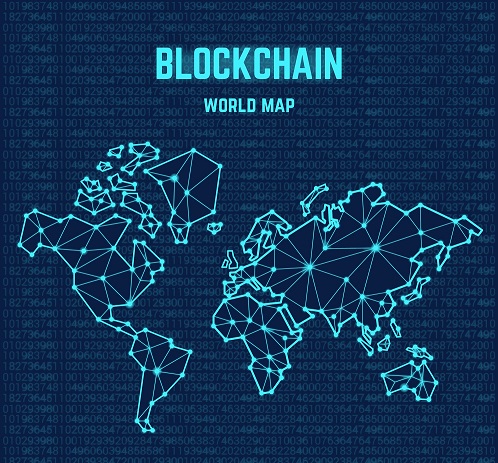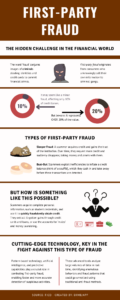The US writer Henry Miller once said, “Every moment is a golden one for him who has the vision to recognise it as such”, and that moment for the banking industry could be now, despite the storm clouds warned about by various sectors for 2020. Because with a more or less buoyant economy, what is undeniable is that the digital transformation in society brings multiple opportunities. And amongst all of them, all the sector’s best experts are talking about the ones for the banking industry. We’re talking about expanding services, data processing and also more satisfied consumers.
This is the conclusion of the co-editor of The Financial Brand and editor of Digital Banking Report, Jim Marous, from an in-depth analysis on the biggest technological trends that will have a disruptive impact on the banking industry over the course of 2020. So, let’s strap ourselves in for a journey that requires new IT and storage strategies, advanced analysis, better cybersecurity capacities and a new perspective on ways of providing banking services.
1) Speed, speed, speed. The banking industry is 5G too
In case you hadn’t heard, 5G doesn’t just mean improving 4G connections by a factor of 10, it also means superfast download and upload speeds and more stable connections. It will become more and more available for use through 2020 and 2021, and not only will it affect more devices, but it is also expected to mean more pressure to lower data tariffs.
Greater connectivity means the previously unheard-of ability to gather and transfer data, a more integrated IoT (Internet of Things), and the convergence between fixed and mobile technologies. And looking at the banking industry, it involves the definitive roll-out of virtual assistants and increased security for communications aided by improved biometric features.
2) Blockchain: from big bad wolf to friend
The banking industry is still cautious about blockchain initiatives, but there’s no reason to think that it will let the opportunity slip by in 2020. Today, there are more tests than ever being carried in retail and corporate banking, and they’re being done for three key reasons: greater trust, greater transparency and lower costs – in other words, what any modern industry needs in order to improve cashflow.
According to the analysis, forays into blockchain “will probably focus on remittances, KYC/ID fraud prevention and risk scoring”. This evolution will also require a cultural change for greater collaboration between institutions and the exchange of data. But this obstacle can also be turned into an opportunity for growth. “Isolation” is all the time become a less viable option for a society in constant transformation.
3) The best way to touch the ground is…
Who ever imagined that “having your head in the clouds” would be the best way to operate? But we’ve chosen the word “clouds” deliberately because, in recent times, there has been a constant debate about whether the future lies on the public or private cloud. To put an end to this debate, it turns out that the answer is… neither of them, the distributed cloud.
But it’s no longer an emerging technology. Gartner estimates that some 75% of business data is created or processed away from centralised data centres. To have all of it on their own system whilst talking about interoperability seems irresponsible but no less irresponsible than conceding total control to an external provider (on the fringes of legal regulations). This is where the distributed cloud comes into play: your access power, my architecture and my data. The result? Greater flexibility and optimisation in three aspects which are key for the banking industry: infrastructure, security and compliance.
4) Health, money… and technology
The banking industry is still cautious about blockchain initiatives, but there’s no reason to think that it will let the opportunity slip by in 2020. Today, there are more tests than ever being carried in retail and corporate banking, and they’re being done for three key reasons: greater trust, greater transparency and lower costs – in other words, what any modern industry needs in order to improve cashflow.
According to the analysis, forays into blockchain “will probably focus on remittances, KYC/ID fraud prevention and risk scoring”. This evolution will also require a cultural change for greater collaboration between institutions and the exchange of data. But this obstacle can also be turned into an opportunity for growth. “Isolation” is all the time become a less viable option for a society in constant transformation.
5) The final days of car finance
Current trends predict a gradual fall in the traditional market for private cars. The vehicles of the future will be autonomous, their useful life will be different from that of recent decades and the various options for use as a service (intelligent and collaborative movement) will multiply.
So, what repercussions will this have on the banking industry? Well, firstly, we’ll see a reduction in the demand for car finance, and for businesses in the sector who aren’t able to anticipate this, it will mean a loss of business. However, for those who are able to anticipate this trend and react to it, it’s a great opportunity to increase the service portfolio om their platforms. This can include risk management, short-term operations, user loyalty programmes, smart booking for vehicles and even rewards depending on reliability or other customer data that allow them to identify usage patterns. The driver who doesn’t have to drive has more time for other tasks, and in all of those, the banking industry has an opportunity to make an impact.
6) Voice beyond fads and marketing
The banking industry is still cautious about blockchain initiatives, but there’s no reason to think that it will let the opportunity slip by in 2020. Today, there are more tests than ever being carried in retail and corporate banking, and they’re being done for three key reasons: greater trust, greater transparency and lower costs – in other words, what any modern industry needs in order to improve cashflow.
According to the analysis, forays into blockchain “will probably focus on remittances, KYC/ID fraud prevention and risk scoring”. This evolution will also require a cultural change for greater collaboration between institutions and the exchange of data. But this obstacle can also be turned into an opportunity for growth. “Isolation” is all the time become a less viable option for a society in constant transformation.
7) The battle between cyber threats and cybersecurity
The banking industry’s work with respect to cybersecurity may be some of the most advanced in the world, and it will continue to be one of the main technological trends in the sector. Because the challenge continues: how to guarantee data privacy and security of personal data.
As more and more functions are automated, so too increases the number of organisations reporting that they’re unable to find the right talent and skills. The increase in mobile devices, IoT devices and the number of parties interested in banking cyber attacks mean that the industry needs to continue to lead the sector, and this is something which, again, represents a threat for players with the least initiative and a great opportunity for those that position themselves correctly.
These are just some of the factors which, amongst other things, are driving us towards a “golden age” of banking, despite previous pessimism.
– Will it be the same for the whole industry?
No, only for those who properly do their homework.







